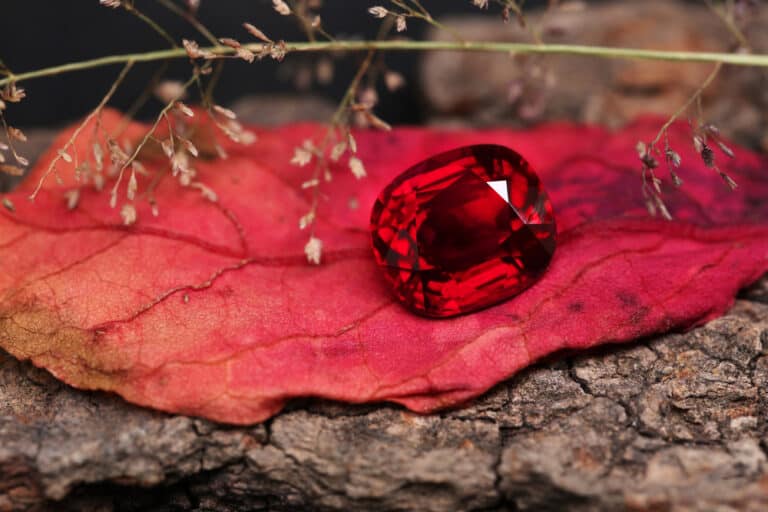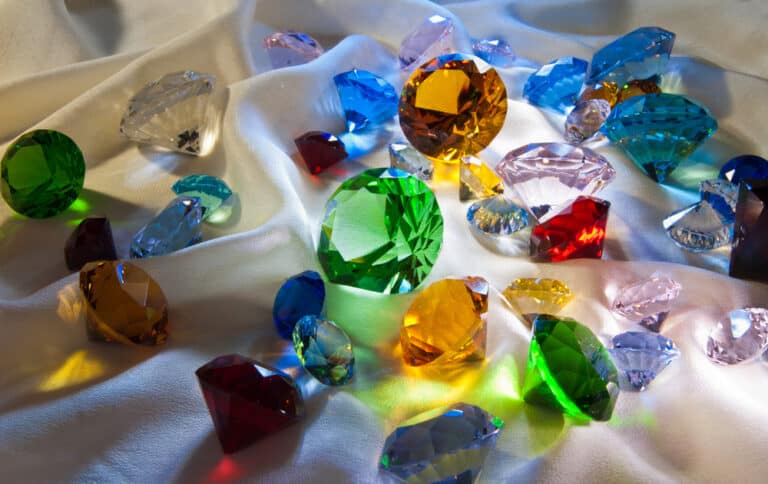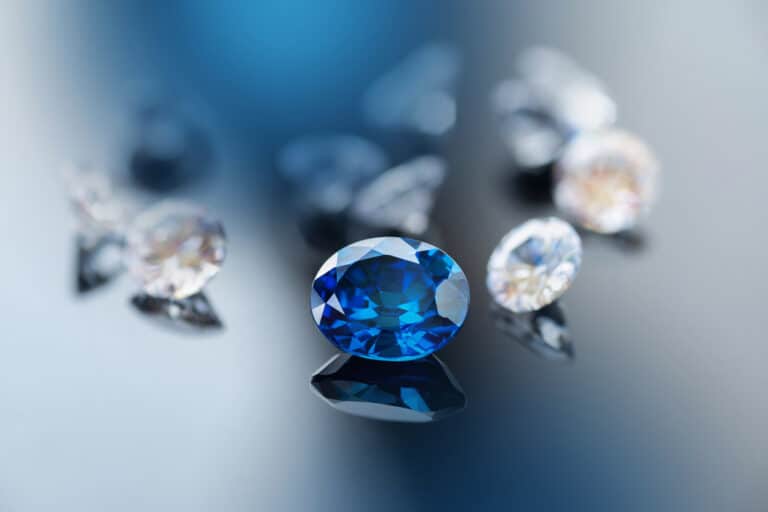Ruby is so hard that it is risky to store it alongside other gems because it can scratch them. Likewise, ruby is resistant to almost all types of damage. But does that mean that ruby is harder than a diamond?
Ruby is not harder than a diamond. While both gems are incredibly hard, ruby only scores a 9 on the Mohs scale. In contrast, diamond scores a 10, meaning that a diamond is exponentially harder than a ruby. Because of that, diamonds will scratch rubies, but the reverse is untrue.
Now that we understand that rubies can’t scratch diamonds, we can look at why that’s the case and what the Mohs Scale of Hardness practically means. Not only that, but this post will also examine other ways to look at your gem’s durability.
What Does Gemstone Hardness Mean?
While people use hardness in everyday life to mean several different things, we can’t do that when talking about gems. Hardness only refers to how well a rock can resist scratches or abrasions.
In that sense, diamond is undoubtedly harder than ruby. We can measure that hardness using the Mohs Scale, which we’ll discuss later in this post.
However, other words also describe how durable a gemstone can be. Toughness means how resistant a gem is to breakage or chipping. In contrast, stability refers to how much a mineral can withstand heat, chemicals, or light exposure.
The Mohs Scale of Hardness
The Mohs Scale of Hardness is a tool that gemologists use to measure a stone’s hardness. After Friedrich Mohs invented it in 1812, the Mohs Scale has remained the go-to method of comparing a material’s resistance.
Each mineral on the scale will scratch the ones below it, while the ones above can scratch it. However, materials with the same hardness cannot damage each other.
So, for instance, rubies can’t scratch sapphires. Both are different corundum types with a hardness of 9. That’s why you won’t find ruby on the Mohs Scale – since it comes from the corundum mineral, you’ll need to look for that instead.
That brings us to how we use this scale. It has ranks from 1 to 10, with 10 – diamond – being the hardest. No natural mineral can scratch a diamond, including ruby.
Not only that, but this scale is roughly exponential. So, while the first few numbers are in almost a straight line, the scale curves sharply upward after that. Because of that, diamonds are significantly harder than other stones.
Not only that, but a stone’s hardness can also vary. Inclusions typically weaken stones. So, a ruby with inclusions might sparkle beautifully, but its hardness will be slightly below 9.
Nevertheless, inclusions don’t matter day to day. You can’t scratch an impure ruby on brick or metal. It’s too strong.
Last, don’t worry that ruby is softer than diamond. Everything is softer than diamonds. But the ruby isn’t far behind either. These two minerals are the hardest and will resist almost every abrasion.
Why Does It Matter That Ruby Is Softer Than Diamond?
Most of the time, ruby and diamond is so hard that they’re nearly indestructible. However, that’s a different issue if you store them together.
Diamond can scratch ruby. If you keep both types of jewelry in the same bag, you can damage the ruby whenever it jostles against the diamond.
Because of that, you must store ruby and diamonds in separate compartments. The same applies to any other stones near these gems. They’re so hard that they’re dangerous to other materials.
So, invest in a quality jewelry box. That way, you can lay each piece of jewelry flat, where it displays well and can’t scratch any nearby valuables.
However, for some people, the diamond’s hardness is a matter of prestige. Not only are diamonds famous for their beauty, but their excellent hardness also plays a role. After all, wouldn’t it be impressive to own a stone that nothing can scratch?
It would be. And, if you agree and your budget permits, go for diamonds instead.

Toughness And Stability
Hardness isn’t the only way to measure a gem’s strength. Instead, we also have toughness and stability.
Contrary to popular belief, diamonds are not especially tough. While these stones can resist scratches all day, the same isn’t true for blunt force.
If you hit a diamond from the correct angle, it will shatter.
We can measure toughness using the Fracture Toughness Scale. For example, jadeite has a value of 120,000, which is why people can use it for bells and sculptures. You could hit a piece of jade with a hammer, and the hammer would bounce clean off.
However, the same isn’t valid for diamonds. It has a value between 5000 and 8000, so it is far weaker. Although it is resistant – it’s perfect for jewelry, after all – it is far from jade’s legendary toughness.
Not only that, but diamonds are especially vulnerable from certain angles. Although that makes them easier to carve, it also means they can chip more quickly. A hard knock along a cleavage plane can chip, fracture, or shatter the diamond.
Rubies fair even worse, though. Corundum only has a value of 600, meaning it’s far less durable than even diamond. So, be especially careful with your rubies. While they won’t scratch, they can shatter.
Last, we also have stability. This term refers to how well a gem can endure temperature or light changes, plus chemical exposure.
Both diamond and ruby are vulnerable to sudden shifts in temperature. If you take either stone from a cold place to a hot one or vice versa, it’ll weaken dramatically. That’s called thermal shock, and diamonds are particularly weak to it.
On the other hand, ruby and diamonds are stable otherwise. These gemstones won’t fade if you wear them in direct sunlight or on a warm day.
However, avoid using chemicals like detergent, acetone, or acids near them, though. Likewise, perfume and other cosmetics can also stain or smudge these gems. Because of that, it’s wisest to remove your jewelry before you cook, clean, or garden.
Conclusion
To conclude, diamond is harder and tougher than ruby. The former rates a perfect 10 on the Mohs Scale of Hardness, while the red stone comes in second place – 9. Nevertheless, both gemstones are resistant to almost any scratch. Remember that ruby is more fragile, though, and it can chip or fracture from blunt force.






